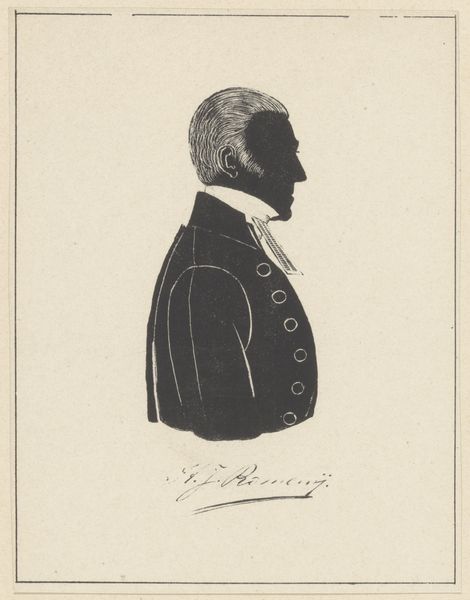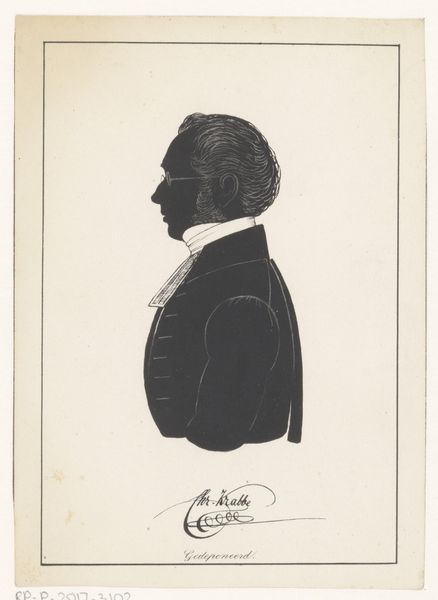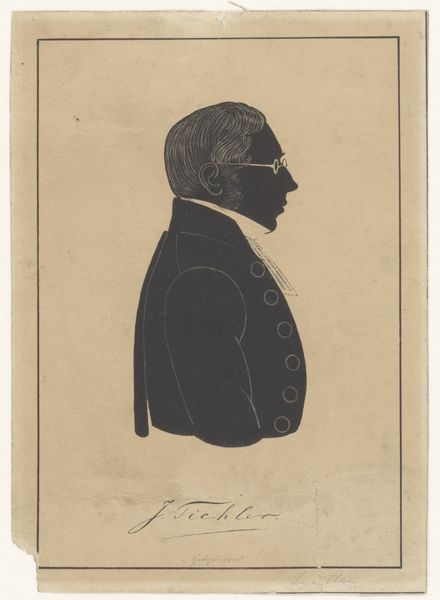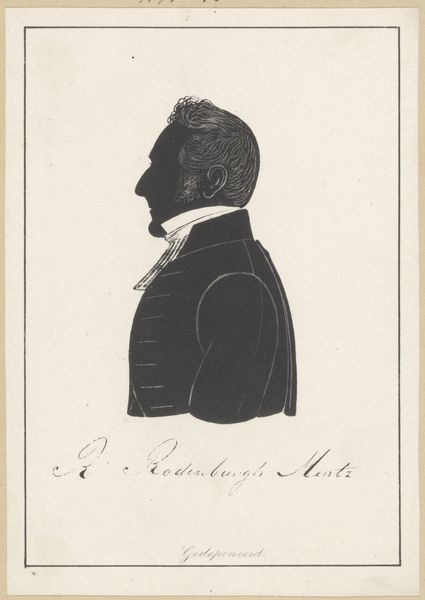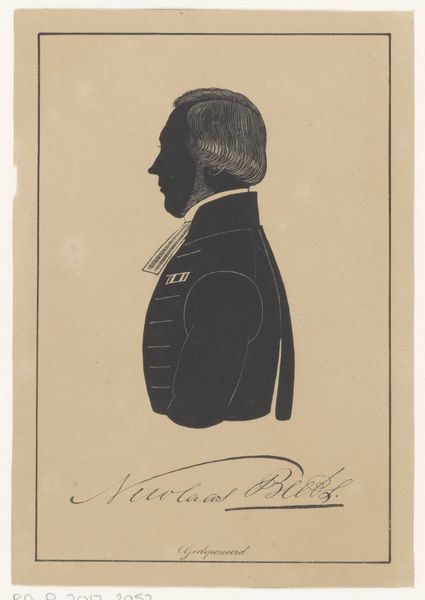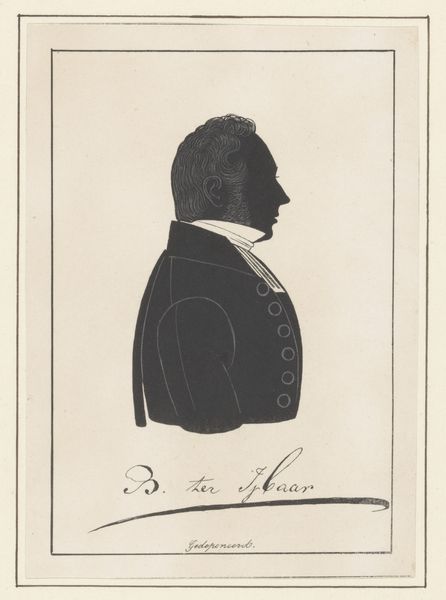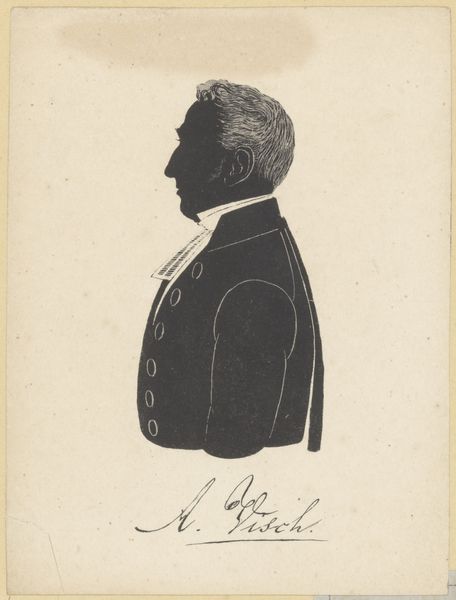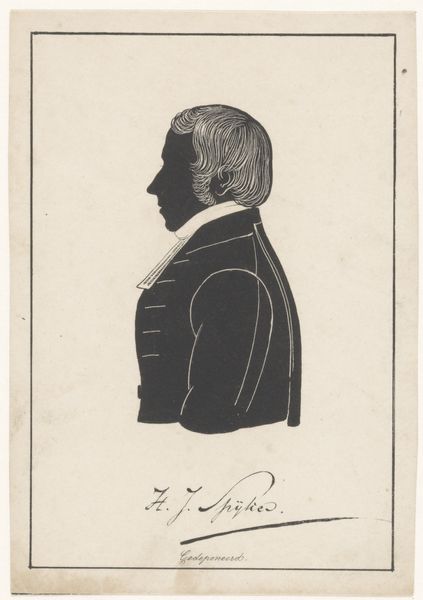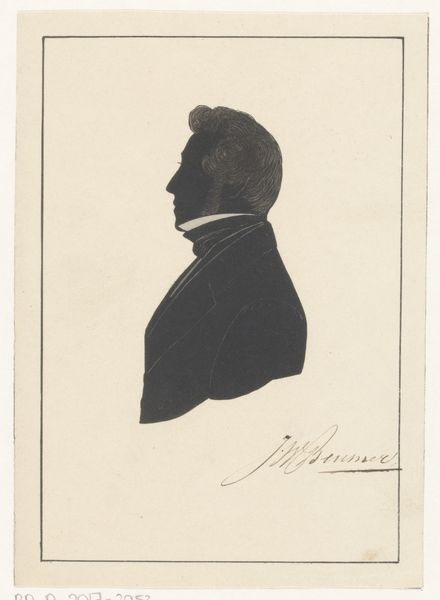
drawing, print, paper
#
portrait
#
drawing
# print
#
caricature
#
caricature
#
figuration
#
paper
#
line
#
watercolour illustration
#
academic-art
Dimensions: Sheet: 4 1/8 × 3 1/8 in. (10.5 × 7.9 cm)
Copyright: Public Domain
Curator: Here we have "Silhouette of a Woman Facing Right," made around 1843 and now residing at The Metropolitan Museum of Art. It's an ink and watercolor drawing on paper, typical of silhouette portraits popular in that era. Editor: Immediately striking is the simplicity and elegance. It’s all about line and shape, a pure reduction of form to convey character. The stark contrast between black and off-white paper gives it such graphic impact. Curator: These silhouettes were a more accessible form of portraiture for the middle class in the 19th century, offering a relatively inexpensive way to capture a likeness before the rise of widespread photography. They became symbols of social mobility and aspirational representation. Editor: Notice how the artist meticulously captured the subject's hairstyle and clothing details. The line describing the slope of her nose and chin communicates more than you would imagine. The details in the gentleman's collar add to the depth as well. Curator: It speaks to the cultural value placed on outward appearance and social identity at the time. Consider how silhouette artists navigated social expectations of representation in this democratic moment. Some silhouettes were considered artistic pieces and status objects displayed on walls like modern photographs, even in frames. Editor: Exactly. It’s an interplay of absence and presence. What isn't there—color, texture, nuanced detail—is just as important as what is. Curator: This portrait is evidence of an evolving role of portraiture within changing class structure of nineteenth century Europe. Its survival and display speaks to an ever present desire for preservation and documentation. Editor: Ultimately, this unassuming silhouette, this small monochrome drawing, is an extraordinary example of graphic purity, where less truly communicates more. Curator: A potent reminder of art’s crucial social functions during a transitional period in its development, even if seemingly simple.
Comments
No comments
Be the first to comment and join the conversation on the ultimate creative platform.
